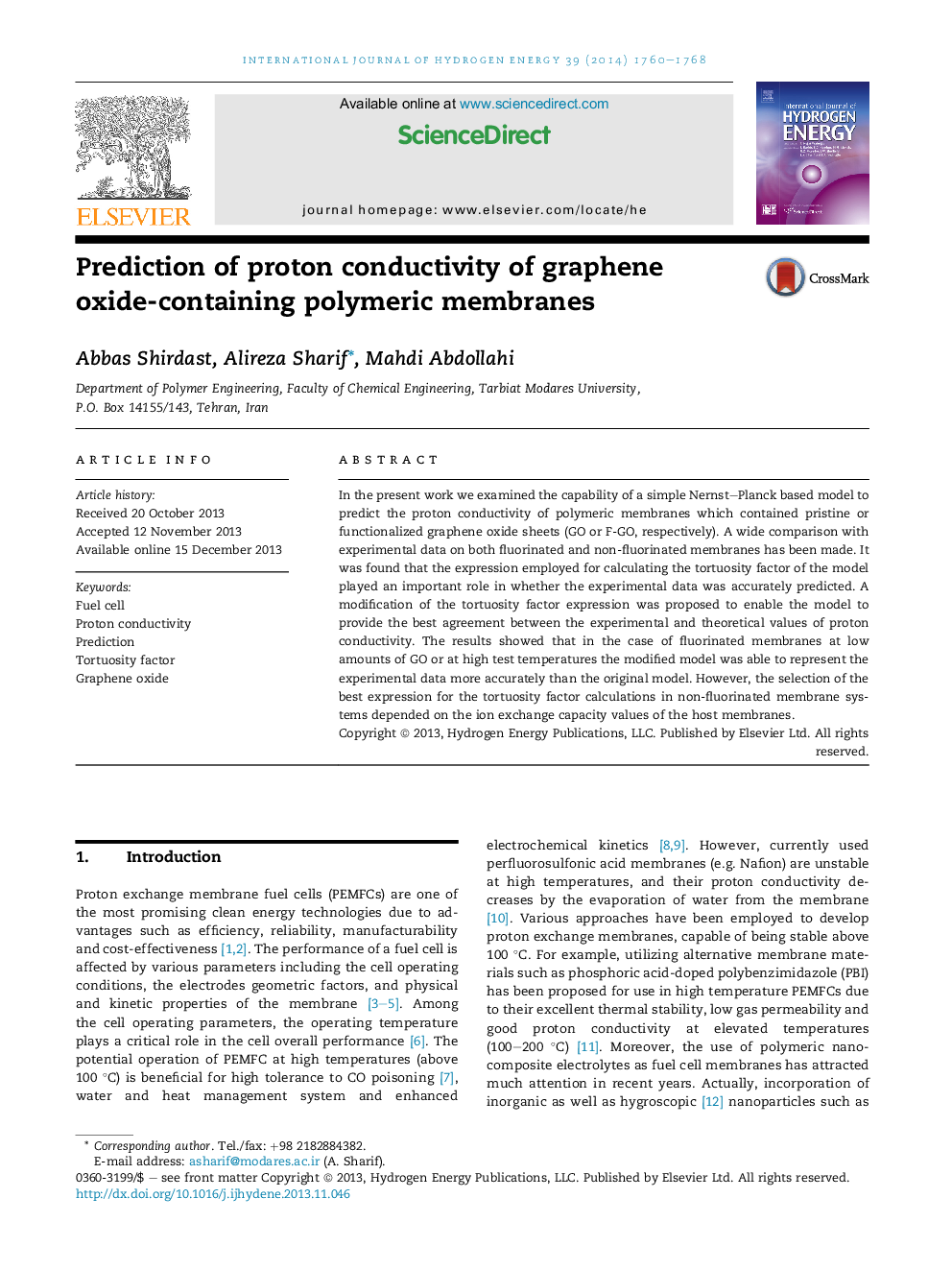| Article ID | Journal | Published Year | Pages | File Type |
|---|---|---|---|---|
| 7720823 | International Journal of Hydrogen Energy | 2014 | 9 Pages |
Abstract
In the present work we examined the capability of a simple Nernst-Planck based model to predict the proton conductivity of polymeric membranes which contained pristine or functionalized graphene oxide sheets (GO or F-GO, respectively). A wide comparison with experimental data on both fluorinated and non-fluorinated membranes has been made. It was found that the expression employed for calculating the tortuosity factor of the model played an important role in whether the experimental data was accurately predicted. A modification of the tortuosity factor expression was proposed to enable the model to provide the best agreement between the experimental and theoretical values of proton conductivity. The results showed that in the case of fluorinated membranes at low amounts of GO or at high test temperatures the modified model was able to represent the experimental data more accurately than the original model. However, the selection of the best expression for the tortuosity factor calculations in non-fluorinated membrane systems depended on the ion exchange capacity values of the host membranes.
Related Topics
Physical Sciences and Engineering
Chemistry
Electrochemistry
Authors
Abbas Shirdast, Alireza Sharif, Mahdi Abdollahi,
